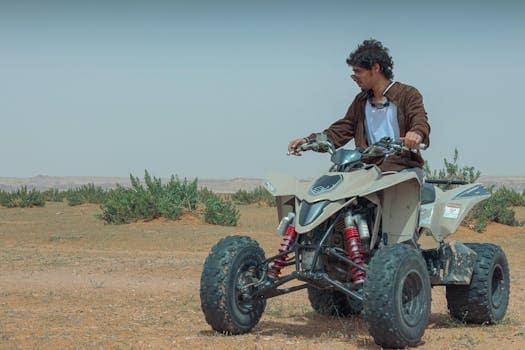Desert Racing: Autonomous Vehicles Tackle Extreme Terrain
With the rise of technology and the continuous development of self-driving cars, new opportunities for autonomous vehicles are being explored. One exciting avenue is the world of desert racing. This fast-paced and high-stakes sport has been dominated by human drivers for decades, but now, autonomous vehicles are stepping in to take on the challenge. In this article, we’ll explore the rise of autonomous vehicles in desert racing and how they are tackling extreme terrain with precision and speed.
The Rise of Autonomous Desert Racing
In recent years, self-driving cars have been making headlines with their innovative technology and the potential for a safer and more convenient future of transportation. However, one area that has been garnering attention is the use of autonomous vehicles in extreme terrain, such as the desert. The idea of automating desert racing may have seemed far-fetched at one point, but now, it’s becoming a reality.
The Advantages of Autonomous Desert Racing
The use of autonomous vehicles in desert racing brings many advantages to the table. One of the most significant advantages is the potential for increased safety. Desert racing is a high-risk sport, with drivers pushing their vehicles to the limit and facing unpredictable conditions. With autonomous vehicles, the risk of human error is eliminated, resulting in a safer racing environment for both drivers and spectators.
Moreover, autonomous vehicles have the potential for enhanced performance. These vehicles are equipped with advanced sensors and technology that allow them to navigate the desert with precision and efficiency. They can analyze the terrain and make quick decisions, resulting in faster speeds and better lap times.
Tackling Extreme Terrain
One of the most significant challenges of desert racing is the extreme terrain. From deep sand dunes to rocky and uneven terrain, drivers must navigate through various obstacles with precision and skill. This is where autonomous vehicles truly shine. With their advanced sensors and algorithm, they can analyze the terrain and adapt their driving strategy accordingly.
Autonomous vehicles use a combination of GPS, LiDAR, and cameras to map out their surroundings and identify any potential hazards. They can also communicate with other vehicles on the track, making split-second decisions to avoid collisions and optimize their racing line. These capabilities allow them to navigate through challenging terrains that would prove difficult for human drivers.
The Future of Desert Racing
As autonomous vehicles continue to improve and evolve, they may even outperform human drivers in desert racing. This could lead to an entirely new era of desert racing, with teams and manufacturers competing to develop the most advanced autonomous racing vehicles. This will not only bring more excitement and innovation to the sport, but it will also drive technological advancements in the autonomous vehicle industry.
Moreover, the use of autonomous vehicles in desert racing can open up new opportunities for research and development. The extreme conditions of desert racing allow for thorough testing of these vehicles, which can further enhance their capabilities and performance in everyday scenarios.
In Conclusion
The rise of autonomous vehicles in desert racing is an exciting development that brings many advantages to the sport. From increased safety to enhanced performance, these vehicles are tackling extreme terrain with precision and speed. As technology advances, we can expect to see even more impressive feats from these autonomous racing vehicles, revolutionizing the world of desert racing for years to come.
In this article, we’ve explored the rise of autonomous vehicles in desert racing and the advantages they bring to the table. With their advanced technology and capabilities, they are proving to be worthy competitors on the track. And as they continue to improve, the future of desert racing looks brighter than ever.










